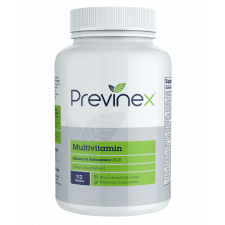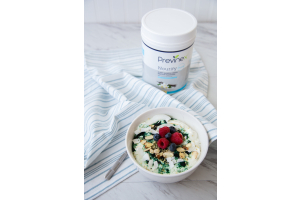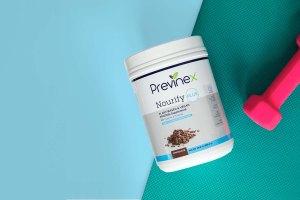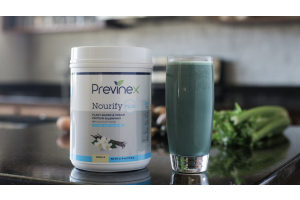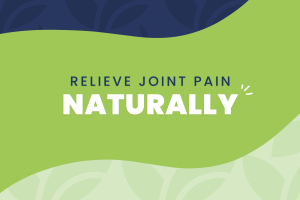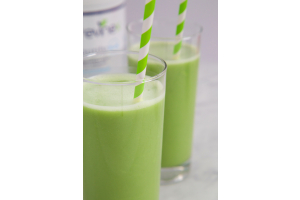
Summer is right around the corner, and if you’ve found yourself getting lost in thought about about basking in the sun and increasing your outdoor activities, Vitamin D might be just what you’re craving.
While there are many benefits to increasing outdoor activities and getting sun exposure, one of the chief benefits is Vitamin D production. And yet, even in peak summer months, it’s estimated that over half of the U.S. population is Vitamin D deficient (and that number increases during the winter).
But, before we dive into why so many are Vitamin D deficient, let’s take a look at some of the risk factors of Vitamin D deficiency.
Why Does Vitamin D Deficiency Matter?
For starters, being Vitamin D deficient carries some serious health risks, including poor bone health, rickets, and osteomalacia. Recent studies have found that Vitamin D deficiency is also associated with an increased risk of certain cancers, type I diabetes, multiple sclerosis, tuberculosis, rheumatoid arthritis, osteoporosis, muscle weakness and pain, depression, hypertension, pregnancy complications, and even the seasonal flu.
Vitamin D unquestionably has a significant influence on health and wellbeing and plays an important role in our entire system. Scientists have identified over 2,000 genes that are influenced by Vitamin D levels, so getting enough Vitamin D is crucial for your health.
The Problem
As mentioned, even in peak summer months when direct sunlight is most abundant, over half of the U.S. population still struggles with Vitamin D Deficiency. Here are some reasons why:
Sunlight
Sunlight is composed of about 1500 wavelengths, but the only wavelengths that help your body produce Vitamin D are UVB rays—these are shorter sun rays that are associated with sunburn. Vitamin D production only occurs when UVB rays shine directly on exposed skin.
UVB rays from the sun actually have to pass through the atmosphere to reach us on the surface of the earth. Physics also plays a role in Vitamin D production, as UVB rays will only penetrate the atmosphere when the sun is above an angle of about 50° from the horizon. When the sun is lower than 50°, the ozone layer reflects UVB rays, and also lets UVA rays through. UVA rays have a longer wavelength than UVB rays and can more easily penetrate the ozone layer and other obstacles, like clouds and pollution, on their way from the sun to the earth. UVA rays are more dangerous and potentially deadly (chronic exposure to UVA rays dramatically increases your risk of skin cancer, photo ages your skin, etc.).
Basically, UVB rays help the body produce Vitamin D, while UVA radiation destroys Vitamin D. The reason for this is balance—it's one of the body’s protective mechanisms to avoid overdosing on Vitamin D when we’re outside. So when we’re exposed to sunlight through our car, office window, or other barriers, we get UVA rays, but no beneficial UVBs.
Sunscreen
Every year when spring and summer roll around, people tend to stock up on sunscreen. Stores around the nation are filled to the brim with sunscreen and we lather it on for protection. While sunscreen does help protect against skin cancer, it also blocks out approximately 97% of UVB rays, and thus our body’s ability to produce Vitamin D from sunlight.
Food
It is very difficult, if not impossible, to get all the Vitamin D we need from our diet alone, as there are only small amounts of Vitamin D found in a small number of foods. It’s found mostly in fish, cod liver oil, beef liver, and other fortified foods. Even still, it’s important to find the balance between getting Vitamin D from sunlight, taking a supplement, and eating Vitamin D-rich foods.
Age & Skin Color
Aging skin produces less Vitamin D. As an example, the average 65 year-old produces only 25% of the Vitamin D that a 20 year-old does. Skin color also makes a difference as people with darker skin produce less Vitamin D since it’s harder for the UVB rays to penetrate tan-to-dark skin.
Where Should I Get Vitamin D?
For most people, the best way to get adequate to optimal levels of Vitamin D is by taking supplements. Unfortunately, most over-the-counter multivitamins and many stand-alone Vitamin D products either have insignificant levels (400 IU or lower), or the Vitamin D is in a form that your body can’t absorb. The main active form of Vitamin D that our bodies can absorb is Vitamin D3 (cholecalciferol), and studies have shown that D3 is more effective in raising these Vitamin D levels in the body. Many vitamins—and even Vitamin D prescriptions—contain Vitamin D2, which is not biologically active.
So it’s important to take the right type of Vitamin D at the right level.
Action Steps
Now that you’re aware of the risks associated with Vitamin D deficiency, you’re probably wondering what the best next steps are. The best way to ensure you’re getting enough Vitamin D is by taking a high-quality supplement. Take at least 2,000 IU per day of Vitamin D3, or 6,000-8,000 IU per day for optimal ongoing benefits. You can take this as a stand-alone product or in a multivitamin. You may want to consider a high-quality multivitamin, as some studies suggest that people who are Vitamin D deficient may also have other deficiencies that have not been diagnosed or discovered.
So as the weather warms up, make sure you’re getting outdoors, safely protecting your skin, and supplementing your Vitamin D intake as needed!

